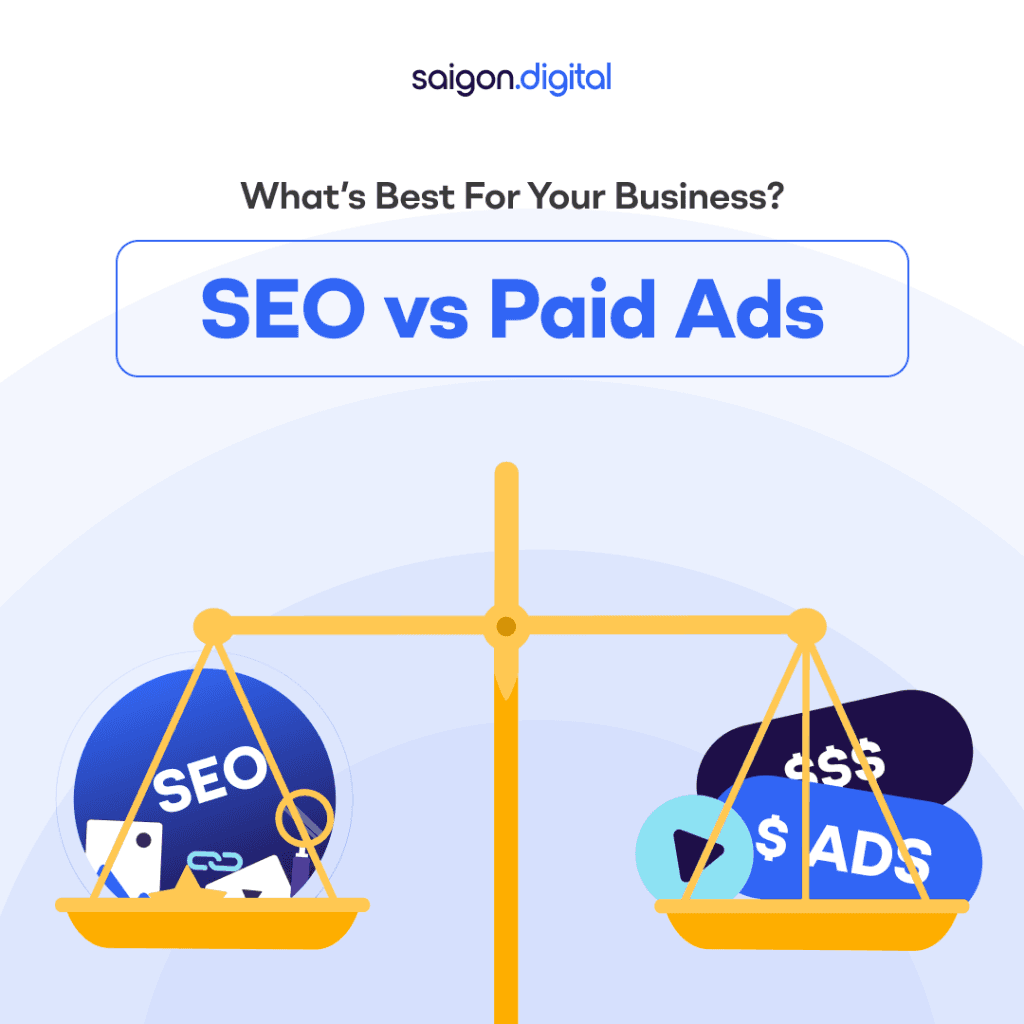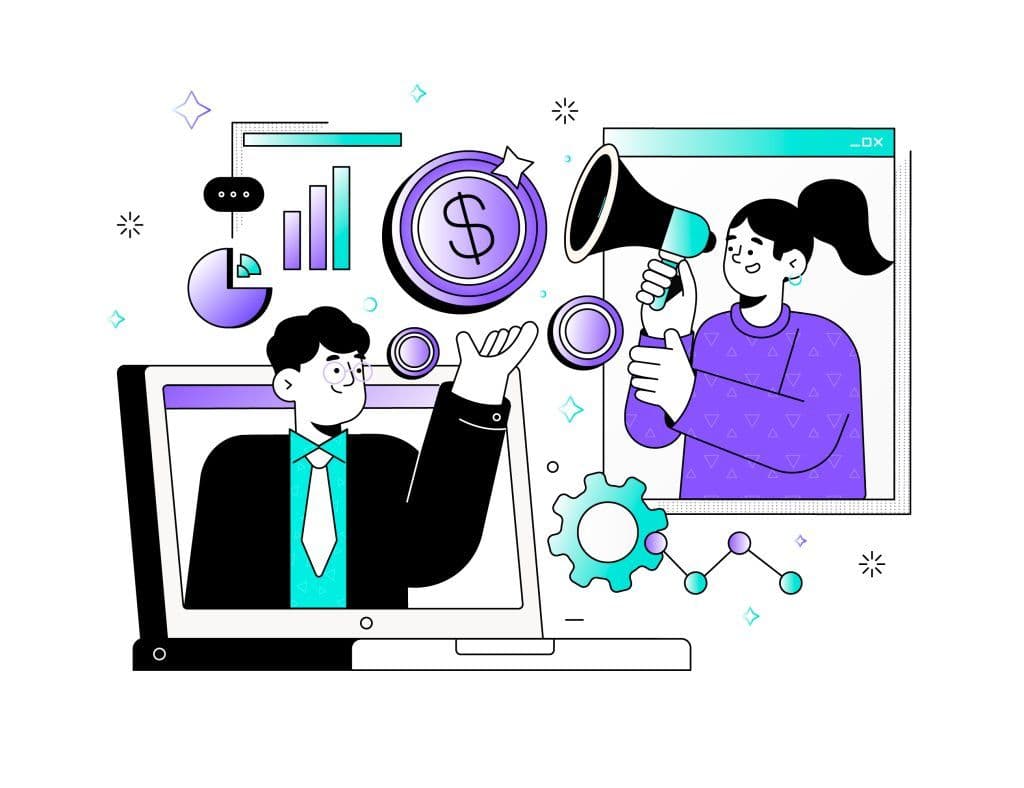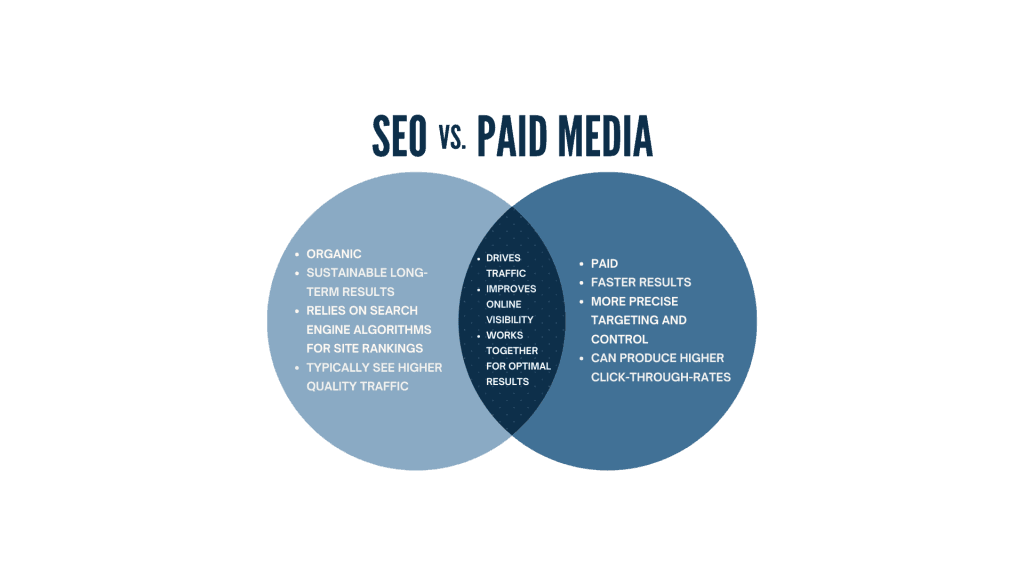
What is SEO?
First things first, what is SEO ? Search Engine Optimisation (SEO) is the practice of improving your website to increase its visibility in search engine results pages (SERPs). It’s about making your site more appealing to search engines like Google, Bing, and others so they rank your pages higher when people search for relevant terms. Key Components of SEO:- On-page SEO: This includes optimising your content, titles, headings, and meta descriptions using relevant keywords.
- Technical SEO: Ensuring your site is technically sound, which includes fast loading, mobile-friendly, secure URL (HTTPS), and structured for search engines.
- Off-page SEO: Building backlinks from other reputable sites to improve your domain authority.
- Content creation: Publishing helpful, relevant, and informative content consistently.
What are Paid Ads?
Paid advertising, also known as paid ads, refers to any marketing where you pay to get your business in front of potential customers. The most common platform for paid ads is Google Ads, but there are also Facebook Ads, LinkedIn Ads, Instagram Ads, and more. Types of Paid Advertising:- Search ads: Appear at the top of Google’s search results (above organic listings).
- Display ads: Banner-style ads that show across websites in the Google Display Network.
- Social media ads: Appear in users’ feeds on platforms like Facebook, Instagram, and LinkedIn.
- Video ads: Like those on YouTube.

SEO vs Paid Ads: A Head-to-Head Comparison
Now that you’ve gained a better understanding of both SEO and paid ads, let’s break down how SEO vs paid ads compare across key areas that matter to your business.1. Cost
- SEO: There’s no cost per click (CPC) involved, but SEO does require time, effort, and potentially agency or freelance support. Think of it as a long-term investment. If you’re operating a small business then small business SEO is the most appropriate since it doesn’t take too much monetary resources.
- Paid Ads: You pay each time someone clicks on your ad. Costs vary depending on competition, but they can add up quickly, especially in competitive industries.
2. Time to Results
- SEO: It can take 3 to 6 months (or longer) to see significant organic traffic. SEO is a marathon, not a sprint.
- Paid Ads: Results are almost immediate. As soon as your ads are approved and your campaign goes live, you can start getting clicks and leads.
3. Longevity
- SEO: The benefits last much longer. A blog post that ranks well can bring in traffic for years with minimal upkeep.
- Paid Ads: Once you stop spending, the traffic disappears. There’s no lasting value unless you’ve captured those leads.
4. Click-Through Rates (CTR)
- SEO: Organic listings often get higher trust from users. Many people skip the ads and go straight to the organic results.
- Paid Ads: Can have lower CTR compared to top organic listings, but they’re still effective for urgent promotions and targeting.
5. Trust and Credibility
- SEO: Ranking organically builds credibility. People tend to trust websites that appear naturally in search results.
- Paid Ads: Some users are wary of ads and may scroll past them, especially if they feel “salesy”.
6. Control and Targeting
- SEO: You have less control over who sees your content. It depends on how search engines interpret your pages.
- Paid Ads: You have complete control, target users by location, age, interests, behaviour, keywords, and more.

When Should You Choose SEO?
SEO is ideal for businesses, especially small businesses, looking to build a strong, sustainable online presence over time. It’s particularly well suited for your business if:- You have a limited ad budget but are willing to invest time or resources in content and optimisation.
- You want to be found for informational searches (“how to fix a leaking tap”, “best accounting software”) as well as commercial ones.
- You aim to generate long-term traffic that continues whether or not you’re actively promoting.
- You’re in a niche where high-quality, helpful content can set you apart.
When Should You Choose Paid Ads?
Paid ads are perfect when you need fast results, have a specific promotion, or want to test the waters in a new market. They’re best used when:- You’ve just launched and need immediate traffic or leads.
- You’re running a time-sensitive promotion or seasonal sale.
- You want to target a very specific audience quickly.
- You’re testing new products, services, or messages and want quick feedback.
Why Not Both?
In many cases, the best strategy isn’t SEO vs paid ads, but SEO and paid ads. Used together, they can complement each other beautifully. Let’s say your business is working on SEO but it's still early days. Running Google Ads in the meantime ensures you’re not missing out on valuable traffic while your organic rankings grow. You can even use data from paid campaigns, like which keywords convert best, to inform your SEO strategy. Similarly, if your SEO is already strong, paid advertising can give your business an added boost. For example, you can retarget users who visited your site organically but didn’t convert, or promote high-performing blog content through Facebook ads to expand its reach. In short, SEO is your long game, and paid advertising is your short game. Used together, they create a balanced strategy that can scale with your business. Benefits of Combining SEO and Paid Ads:- Maximise visibility: Appear in both organic and paid spots, increasing your chances of getting clicks.
- Data sharing: Use PPC data (like high-performing keywords) to inform your SEO content strategy.
- A/B testing: Use paid ads to test headlines, landing pages, and messages before committing to long-term SEO content.
- Retargeting: Drive traffic via SEO, then use retargeting ads to bring those visitors back.
Common Mistakes to Avoid
Whether you choose SEO, paid advertising, or both, here are some pitfalls to steer clear of:- Neglecting SEO because paid ads are faster: You miss out on long-term value.
- Assuming SEO is free: It takes time, expertise, and often tools or agency support.
- Running ads without proper targeting: You’ll burn your budget without meaningful results.
- Expecting overnight SEO results: It takes time to climb the rankings.
- Relying on just one channel: A single-channel strategy is risky. Diversify for best results.
Conclusion: SEO vs Paid Ads – What’s Best for Your Business?
There’s no one-size-fits-all answer to the SEO vs paid ads debate. Both strategies have their strengths and can play a vital role in your digital marketing.- Choose SEO if you're in it for the long haul and want to build a solid foundation of trust and visibility.
- Choose paid ads if you need instant results, want to test offers, or target a specific group quickly.
- Choose both if you want to scale efficiently and dominate both organic and paid sections of the search results.
FAQs About SEO vs Paid Ads
1. What’s the main difference between SEO and paid ads?
SEO (Search Engine Optimisation) focuses on improving your website’s organic visibility in search results, while paid ads give you instant visibility by paying for placements on platforms like Google, Facebook, or LinkedIn. SEO is a long-term investment, while paid ads deliver immediate but short-lived results.
2. Is SEO or paid advertising more cost-effective?
SEO usually offers better long-term value since organic traffic doesn’t require ongoing payments per click. However, it takes time to build rankings. Paid ads provide fast traffic but can become expensive, especially in competitive industries. The most cost-effective option depends on your budget and goals.
3. How long does it take to see results from SEO vs paid ads?
SEO typically takes 3–6 months (or more) to show significant results, while paid ads can generate clicks and leads almost immediately after launch. SEO is best for sustainable growth, while paid ads are ideal for quick wins.
4. Should my business choose SEO or paid ads?
Choose SEO if you want to build lasting visibility, credibility, and traffic without relying on constant ad spend. Choose paid ads if you need immediate results, have a time-sensitive offer, or want to test a new product or service quickly. Many businesses benefit from using both together for maximum impact.
5. Can SEO and paid ads work together?
Absolutely. Combining SEO and paid ads creates a balanced strategy: SEO builds long-term authority, while paid ads drive quick, targeted traffic. You can even use PPC data to inform your SEO strategy and retarget organic visitors with ads for better conversions.





